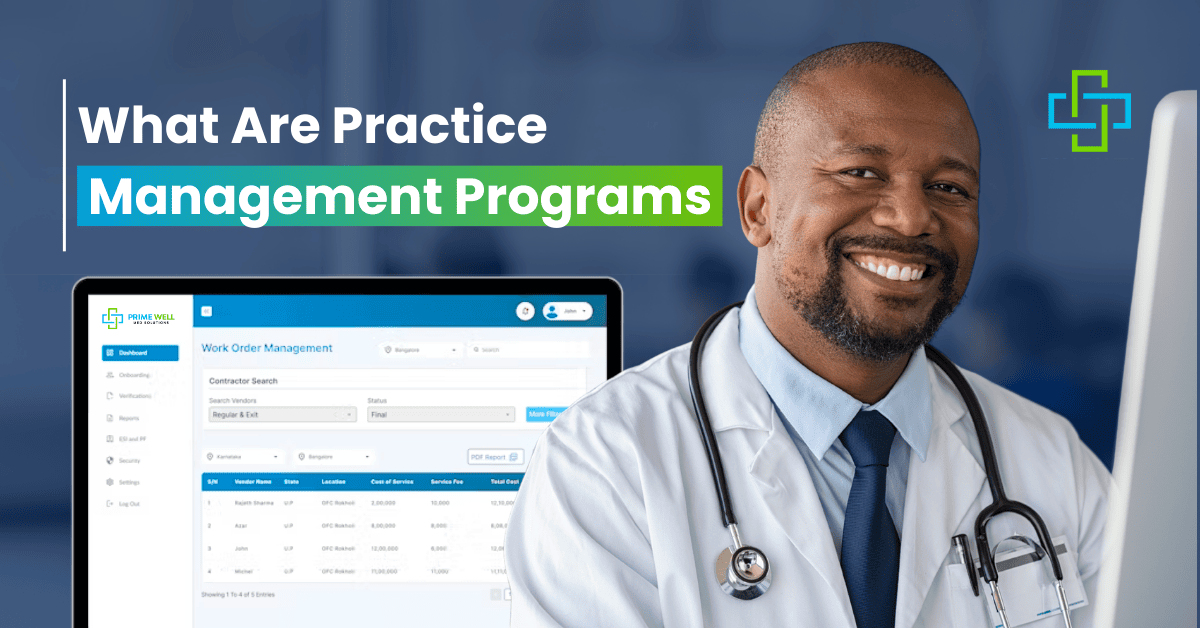In the year 2025, the healthcare system still struggles with increased financial constraints. With increasing cost of operations, intricate billing rules and shrinking reimbursement, providers need to ensure best management of their finances.
That is where revenue cycle management technology plays a role.
The right RCM system can help turn your practice around: improve billing accuracy, accelerate payments and reduce human errors. However, not all technologies are the same.
In this guide, Prime Well Med Solutions finds the features to look for in revenue cycle management technology that will keep you ahead in the competitive healthcare industry.
Let’s get started!
What is Revenue Cycle Management Technology?
When we talk about revenue cycle management technology, we’re discussing the digital systems and tools that healthcare providers tap into to manage the financial side of patient care.
From patient registration to payment in full, it is tracked, monitored, and maximized. It links the administrative and clinical components of your practice, and ensures every aspect of it.
The revenue cycle management technology enables providers to efficiently manage claims, minimize denials, eliminate billing errors, and stay on top of never-ending regulations. By automating these processes and making them smoother, it doesn’t just help you get money faster, it also helps ensure your patients have a better, faster, less painful experience themselves.
Why Choosing the Right RCM Technology is Important?
Choosing the right revenue cycle management services can be the difference between a healthy bottom line and constant financial stress. Shoring up your organization’s revenue cycle can mean better collection rates and compliance with ever-changing healthcare laws, and the tools your team needs to do their work smarter—not harder.
What to Look for in Revenue Cycle Management Technology in 2025?
Automation Capabilities
Automation is no longer optional. Seek revenue cycle management technology that automates routine processes such as charge capture, coding and claims submission. This cuts down on entry errors and quickly generates a bill.
Real-Time Eligibility Checks
Insurance issues are a common reason for delays. It is important that your RCM technology actually checks insurance eligibility in real time when scheduling an appointment. That way you won’t get any surprises later in the cycle.
Claims and Denial Management Tools
A robust system would have mechanisms built in to keep tabs on their claims and denials and signal the reasons for them. A strong revenue cycle management technology will help you fix errors before resubmitting, which will improve your approval rate.
EHR and Practice Management Systems Interface
Your RCM solution needs to complement your current EHR or practice management system. The integration of services and the seamless data transfer from service to service, reduces time and duplication.
Analytics and Reporting Tools
Revenue cycle analytics are critical. Your software needs to be outfitted with real-time dashboards and robust reporting capabilities that give you visibility into your revenue trends, issues with cash flow, as well as pinpoints of where the billing process gets bottlenecked.
Scalability and Cloud Access
If you go to the next level your system should too. As cloud-based technology can be accessed from multiple locations and is secure and backed up, it is now used for RCM.
User-Friendly Interface
All the power in the world won’t do you much good if the system is hard to work with. Ensure the technology has a clean, user-friendly interface that your admin and billing teams can easily pick up and use.
Why Using Updated Revenue Cycle Management Technology is a Good Idea?
Opting for the best revenue cycle management software in 2025 comes with a number of advantages:
- Automation and instant submissions of claims means fewer chances of errors, and that the process is fast.
- Integrated “guardrails” help identify errors before an application is submitted.
- Stay ahead on HIPPA and payer needs.
- Reduces the manual effort.
- Get insight into what’s trending and how to make better business decisions with detailed analytics.
While a successful revenue cycle begins with service and ends with payment, nailing down everything in between is what can make or break the long-term future of any healthcare organization.
How Can Prime Well Med Solutions Help You?
Prime Well Med Solutions assists healthcare providers in updating their billing processes with current revenue cycle management technology.
We help you with:
- End-to-end revenue cycle management
- Custom RCM system setup
- Denial tracking and prevention
- Integration with your EHR systems
- Staff training and onboarding
Whether you are a small clinic or large healthcare provider, streamline and enhance your workflow, prevent costly errors, and improve your financial performance with our customizable solutions.
Final Thoughts
The success of a healthcare practice in 2025 isn’t just about delivering patient care, it’s also about how efficiently the bill comes. By choosing the right revenue cycle management technology, you can reduce billing errors as well shave days off of your reimbursement time and enhance your practice’s cash flow.
On the hunt for a reliable partner who will help lead your practice into the future?
Contact us today!





